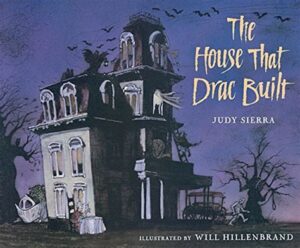Explore the book’s synopsis, key themes, character insights, storytelling impact, and the author’s inspiration in this comprehensive analysis.In the riveting narrative “The House That Crack Built,” readers are thrust into a world shaped by the harsh realities of addiction, poverty, and resilience. This powerful story delves into the lives of those affected by the crack cocaine epidemic, weaving a tale that resonates with emotional depth and societal implications. As we explore the synopsis of the book, we unravel the intricate themes that highlight the struggles and triumphs of the characters. Through a detailed character analysis, we gain insight into their motivations and complexities, providing a glimpse into their humanity amidst chaos. The impact of the story extends beyond its pages, sparking important conversations about addiction and recovery. Additionally, we will delve into the author’s inspiration, shedding light on the experiences that fueled this poignant work. Join us as we unpack the poignant messages and profound experiences depicted in this evocative book.
Synopsis of the Book
The House That Crack Built is a poignant and evocative narrative that delves into the multifaceted realms of addiction, family dynamics, and the stark reality of urban life. The book presents a gripping account of the impact of crack cocaine on communities, particularly focusing on the lives of those caught in its destructive grip. Through a raw and unflinching lens, the author highlights the challenges faced by individuals and families as they navigate the often-treacherous waters of drug dependence.
The novel intricately weaves together the stories of various characters, showcasing their struggles and resilience in the face of overwhelming odds. It portrays the relentless cycle of addiction, detailing how it permeates not just personal lives but extends its effects to neighborhoods and futures. The vivid descriptions and relatable experiences create a powerful connection with readers, allowing them to see the human side of this social issue.
Moreover, The House That Crack Built serves as a crucial commentary on the societal structures that contribute to the drug epidemic, prompting readers to reflect on the larger implications of addiction in contemporary society. This compelling tale, enriched with emotional depth and a sense of urgency, ultimately calls for empathy and understanding towards those affected by the scourge of addiction.
Themes Explored
The book The House That Crack Built delves into several profound themes that resonate deeply with readers. One of the primary themes is the devastating impact of addiction. The narrative paints a vivid picture of how drug abuse can tear apart families and communities, illustrating the struggles of both the users and their loved ones.
Another significant theme is the cycle of violence and poverty. The author explores how individuals are often trapped in a vicious cycle where socio-economic status perpetuates criminal behavior. This theme is expressed through the lives of the characters, showcasing their daily battles against circumstances that seem insurmountable.
Additionally, the theme of redemption is intricately woven throughout the story. Many characters seek a path to recovery and redemption, highlighting the human instinct to strive for a better life. The author portrays the raw realities of this journey, making it relatable and poignant.
Through these themes, The House That Crack Built not only tells a story but also invites readers to reflect on the broader societal issues surrounding addiction, violence, and the quest for redemption, encouraging a deeper understanding of the human condition.
Character Analysis
The House That Crack Built intricately explores the lives of its characters, providing a multifaceted view of their struggles, motivations, and growth throughout the narrative. Each character serves as a vessel to convey the profound impact of their environment and choices influenced by addiction, poverty, and the search for identity.
At the heart of the story is Randy, a young man caught in the grips of addiction and the chaos of urban life. His character epitomizes the struggle between desire and desperation as he navigates the highs and lows of his existence. Randy’s evolution throughout the novel portrays the devastating effects of drug dependency on personal aspirations and relationships.
Another pivotal character is Lisa, Randy’s sister, who embodies resilience and hope. Her unwavering support for her brother highlights the familial bonds that can both uplift and burden. Lisa’s journey showcases the destructive nature of addiction not only on the individual but on those who love them, shedding light on the shared pain within families affected by substance abuse.
Lastly, the narrative introduces Mr. Anderson, a community figure who represents both authority and compassion. His attempts to guide the younger generation contrast with Randy’s choices, illustrating the tension between guidance and the temptation of the streets. The interactions between Mr. Anderson and the main characters deepen the theme of community responsibility and the possibility of redemption.
Through these characters, The House That Crack Built paints a vivid picture of the societal issues plaguing urban areas, inviting readers to reflect on the complex dynamics of family, community, and the fight against addiction.
Impact of the Story
The book The House That Crack Built by Brown offers a profound and devastating glimpse into the impact of addiction, particularly crack cocaine, on individuals and their communities. The narrative serves as a stark reminder of the social, economic, and psychological consequences that drug abuse can unleash. Through its powerful storytelling, the book emphasizes the need for awareness and intervention in the lives of those affected.
One of the most significant impacts of the story is its ability to raise awareness about the epidemic of addiction. By detailing the emotional and physical toll on people, the book humanizes the statistics often associated with drug use, inviting readers to empathize with the struggles faced by many. This serves as a crucial educational tool, fostering understanding and compassion among readers who may be unfamiliar with these issues.
This book also highlights the systemic issues that contribute to the cycle of addiction. It illustrates how poverty, lack of education, and limited access to healthcare can exacerbate the problem, leading to a cycle that is hard to break. By weaving these themes into the narrative, the author encourages discussions about social justice and the need for comprehensive reforms to address the root causes of drug addiction.
Furthermore, The House That Crack Built has influenced other authors, activists, and policymakers. Its raw portrayal of addiction has sparked dialogues on mental health, rehabilitation, and the importance of creating supportive environments for recovery. This ripple effect showcases the book’s enduring impact in both literary and social spheres, making it a significant work in contemporary discussions about addiction.
Author’s Inspiration
The creative force behind The House That Crack Built is none other than David Lee, whose experiences shaped the narrative deeply. Having grown up in a neighborhood grappling with the devastating effects of drug addiction, Lee draws heavily on his own reflections and observations of the harsh realities faced by many. His portrayal of the struggles and resilience of individuals in such environments offers a profound commentary on societal issues.
Lee’s inspiration stemmed from his childhood friends and family members who succumbed to the trap of substance abuse. This personal connection to the character’s journeys in the book allows readers to experience the visceral emotions that surround such circumstances. David Lee often cites the importance of storytelling as a means to convey these heavy themes, believing that literature can provide not only insight but also hope.
Moreover, the author was inspired by various writers who came before him, such as James Baldwin and Toni Morrison, whose works tackled challenging social themes. This influence can be seen in the way Lee skillfully weaves together the personal with the political, ultimately creating a rich tapestry that compels readers to engage with the story on multiple levels. Through The House That Crack Built, David Lee aims to spark necessary conversations, encouraging audiences to reflect on their own perceptions of addiction and recovery.
Frequently Asked Questions
What is the main theme of ‘The House That Crack Built’?
The main theme of ‘The House That Crack Built’ revolves around the impact of drug addiction and the systemic issues within impoverished communities, exploring how these factors shape individual lives and family dynamics.
Who is the author of ‘The House That Crack Built’?
The author of ‘The House That Crack Built’ is Donna Hill, a renowned writer known for her compelling storytelling and rich character development.
What genre does ‘The House That Crack Built’ belong to?
‘The House That Crack Built’ is primarily a work of urban fiction, addressing serious social issues through engaging narratives.
How does the setting influence the story in ‘The House That Crack Built’?
The setting plays a crucial role in ‘The House That Crack Built’, as it highlights the struggles and harsh realities faced by residents in urban areas affected by drug crises, shaping the characters’ experiences and choices.
Are there any significant characters in ‘The House That Crack Built’?
Yes, the book features several significant characters whose lives intersect, each representing different facets of society affected by addiction, and their stories illustrate the broader societal challenges they face.
What message does the book convey regarding addiction?
The book conveys a powerful message about the cyclical nature of addiction and its far-reaching consequences, emphasizing the need for empathy, understanding, and community support in addressing such issues.
Is ‘The House That Crack Built’ based on true events?
While ‘The House That Crack Built’ is a work of fiction, it is inspired by real-life experiences and the author’s observations of urban life, making it relatable and impactful for readers.





